Spinal Ligament
Table of Contents
Introduction
Spinal ligaments are tough, fibrous bands of connective tissue that help support and stabilize the spinal column. These ligaments run along the length of the spine, attaching to the vertebrae and other structures in the back. They play an important role in maintaining proper alignment and preventing excessive movement of the spine.
There are several types of spinal ligaments, including the anterior longitudinal ligament, posterior longitudinal ligament, ligamentum flavum, interspinous ligaments, and supraspinous ligament. Each of these ligaments has a specific location and function within the spine.
Ligaments of the Spinal Ligament
The spinal ligaments are important structures that play a crucial role in supporting and stabilizing the spinal column. They help to maintain the proper alignment of the vertebrae and limit excessive movement in different planes. Here are some of the functions of the spinal ligaments:
- Anterior Longitudinal Ligament (ALL): The ALL runs along the front of the vertebral bodies and helps to prevent hyperextension of the spine. It limits excessive movement in the sagittal plane, which is the plane that divides the body into left and right halves. The ALL is the strongest ligament in the spine and provides significant stability to the spinal column.
- Posterior Longitudinal Ligament (PLL): The PLL runs along the back of the vertebral bodies within the spinal canal and helps to prevent hyperflexion of the spine. It limits excessive movement in the sagittal plane and provides support to the spinal cord and nerve roots.
- Ligamentum Flavum: The ligamentum flavum connects adjacent vertebrae and runs along the back of the spinal canal. It is elastic and helps to maintain proper spacing between the vertebrae while allowing for some flexibility. The ligamentum flavum also plays a role in protecting the spinal cord and nerve roots from compression.
- Interspinous Ligaments: The interspinous ligaments connect adjacent spinous processes and help to limit excessive movement in the spinal column. They provide stability to the spine and help to prevent injuries such as whiplash.
- Supraspinous Ligament: The supraspinous ligament runs along the top of the spinous processes and connects them together. It helps to limit excessive flexion of the spine and provides stability to the spinal column.
In the end, the spinal ligaments work together to provide support and stability to the spinal column. They help to maintain proper alignment of the vertebrae, limit excessive movement in different planes, and protect the spinal cord and nerve roots from injury. Injuries to the spinal ligaments can result in pain, stiffness, and reduced mobility, and proper diagnosis and treatment are essential for a full recovery.
Functions of the Spinal Ligament
The spinal ligaments serve several important functions in the body. One of their primary functions is to provide support and stability to the spinal column. They help to maintain the proper alignment of the vertebrae and limit excessive movement in different planes, which is essential for maintaining good posture and preventing injuries.
The anterior longitudinal ligament (ALL) is the strongest ligament in the spine and helps to prevent hyperextension of the spine. It runs along the front of the vertebral bodies and provides significant stability to the spinal column. The posterior longitudinal ligament (PLL), on the other hand, runs along the back of the vertebral bodies within the spinal canal and helps to prevent hyperflexion of the spine. It provides support to the spinal cord and nerve roots and helps to prevent injuries such as herniated discs.
The interspinous ligaments connect adjacent spinous processes and help to limit excessive movement in the spinal column. They provide stability to the spine and help to prevent injuries such as whiplash. The supraspinous ligament runs along the top of the spinous processes and connects them together. It helps to limit excessive flexion of the spine and provides stability to the spinal column.
Injuries to the spinal ligaments can result in pain, stiffness, and reduced mobility. correct diagnosis and treatment are crucial for a full recovery. Treatment may include rest, physical therapy, medication, or surgery, depending on the severity of the injury.
Injuries of the Spinal Ligament
There are several ligaments in the spine, each with its own function and potential for injury. Here are some common injuries to each spinal ligament:
- Anterior Longitudinal Ligament (ALL): injuries to the ALL are relatively rare but can be severe. Hyperextension injuries and compression fractures are the most common types of injury to the ALL.
- Posterior Longitudinal Ligament (PLL): Injuries to the PLL can occur due to trauma or degenerative conditions such as spinal stenosis. Symptoms may include pain, weakness, and numbness in the legs or arms.
- Ligamentum Flavum: Injuries to this ligament can occur due to trauma or degenerative conditions such as spinal stenosis. Symptoms may include pain, weakness, and numbness in the legs or arms.
- Interspinous Ligament: Injuries to this ligament can occur due to trauma or degenerative conditions such as spinal stenosis. Symptoms may include pain, weakness, and numbness in the legs or arms.
- Supraspinous Ligament: Injuries to this ligament can occur due to trauma or degenerative conditions such as spinal stenosis. Symptoms may include pain, weakness, and numbness in the legs or arms.
- Ligamentum Nuchae: Injuries to this ligament can occur due to trauma or degenerative conditions such as cervical spondylosis. Symptoms may include pain, stiffness, and limited range of motion in the neck.
Injuries to any of these spinal ligaments can be painful and may require medical attention. Proper diagnosis and treatment are essential for a full recovery and to prevent long-term complications such as chronic pain or spinal instability.
Examination test for Spinal Ligament injuries
There are several tests that are very use full for checking spinal ligament conditions, which include
- Spurling’s Test
- The Transverse Ligament Test
- Rib Springing Test
- Lumbar Ligament Stress Test
- Sacral Spring Test
Spurling’s Test
Spurling’s Test is a special test used to assess the stability of the cervical spine and identify any areas of weakness or instability. It is typically performed when a patient presents with symptoms such as neck pain, arm pain, or numbness and tingling in the upper extremities.
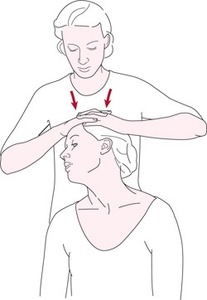
During the test, the patient is asked to sit upright with their head tilted to one side. The medical professional then gives downward pressure on the top of the patient’s head while rotating it to the opposite side. This maneuver compresses the cervical spine and can reproduce symptoms if there is an underlying spinal ligament injury or nerve compression.
If the test is positive, meaning it reproduces the patient’s symptoms, further imaging studies or diagnostic tests may be ordered to confirm the diagnosis and develop an appropriate treatment plan. Treatment options for spinal ligament injuries may include rest, physical therapy, pain management, or in severe cases, surgery.
The Transverse Ligament Test
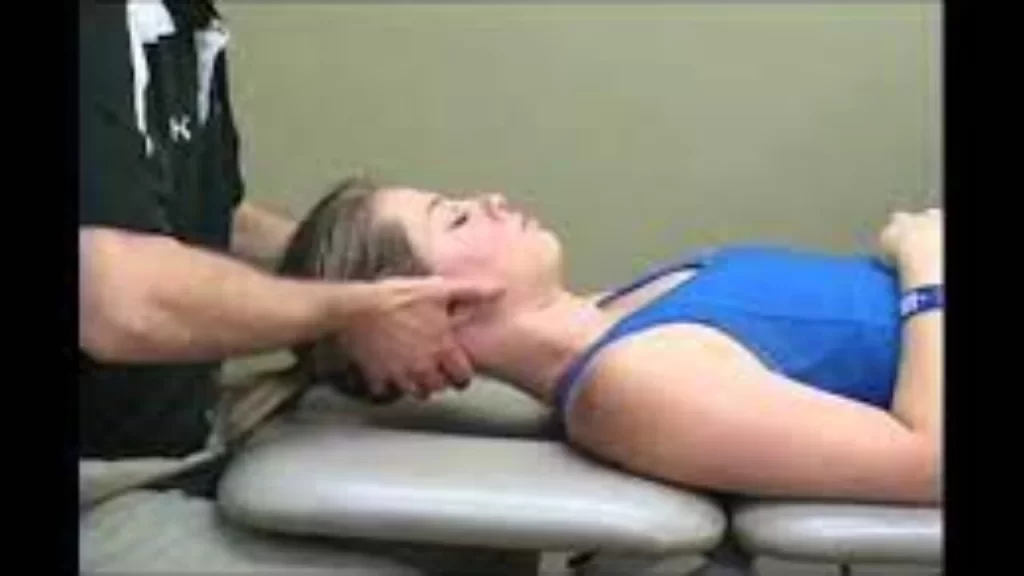
The Transverse Ligament Test is a special test used to assess the stability of the transverse ligament, which is located at the base of the skull and helps to hold the atlas (the first cervical vertebra) in place. A medical professional typically performs this test which involves applying pressure to the back of the patient’s head while gently pushing it forward.
To perform the Transverse Ligament Test, the patient is typically asked to lie down on their back with their head in a neutral position. The medical professional then places one hand on the patient’s forehead and the other hand on the chin. They apply gentle pressure to the back of the patient’s head while simultaneously pushing it forward.
During this test, the medical professional will be assessed for any instability or movement of the atlas. If there is excessive movement or instability, it may indicate damage or injury to the transverse ligament. This can result in symptoms such as neck pain, headaches, and difficulty with neck movements.
It is necessary to take in mind that the Transverse Ligament Test should only be performed by a trained medical professional as it involves applying pressure to the neck and can be potentially dangerous if performed incorrectly. If you are experiencing neck pain or other symptoms, it is important to seek medical attention and undergo a comprehensive physical examination to determine the underlying cause of your symptoms.
Rib Springing Test
This test is used to identify any areas of weakness or instability in the thoracic spine and can be helpful in diagnosing conditions such as rib subluxations or thoracic spine sprains.
During the test, the patient is asked to lie on their stomach with their arms at their sides. The medical professional then applies pressure to the patient’s ribs, gently pushing them in and out while assessing for any abnormal movement or pain.
If the test is positive, meaning it reproduces the patient’s symptoms, further imaging studies or diagnostic tests may be ordered to confirm the diagnosis and develop an appropriate treatment plan. Treatment options for thoracic spine ligament injuries may include rest, physical therapy, pain management, or in severe cases, surgery.
Lumbar Ligament Stress Test
This test is used to identify any areas of weakness or instability in the lumbar spine and can be helpful in diagnosing conditions such as lumbar sprains or facet joint dysfunction.
During the test, the patient is asked to lie on their stomach with their legs straight. The medical person then gives pressure on the patient’s lower back, gently pushing it forward while assessing for any abnormal movement or pain.
If the test is positive, meaning it reproduces the patient’s symptoms, further imaging studies or diagnostic tests may be ordered to confirm the diagnosis and develop an appropriate treatment plan. Treatment options for lumbar spine ligament injuries may include rest, physical therapy, pain management, or in severe cases, surgery.
Sacral Spring Test
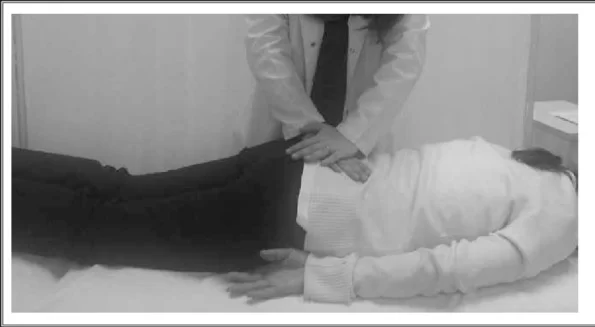
This test is used to identify any areas of weakness or instability in the sacrum and can be helpful in diagnosing conditions such as sacroiliac joint dysfunction or sacral ligament sprains.
During the test, the patient is asked to lie on their back with their legs straight. The medical professional then applies pressure to the patient’s sacrum, gently pushing it downward while assessing for any abnormal movement or pain.
If the test is positive, meaning it reproduces the patient’s symptoms, further imaging studies or diagnostic tests may be ordered to confirm the diagnosis and develop an appropriate treatment plan. Treatment options for sacral ligament injuries may include rest, physical therapy, pain management, or in severe cases, surgery. It is important to note that this test should only be performed by a trained medical professional and should not be attempted at home.
Treatment of the Spinal Ligament
Treatment of the spinal ligament depends on the severity of the injury and the underlying cause.
Conservative treatment options for spinal ligament injuries include rest, ice, compression, and elevation (RICE), pain management with non-steroidal anti-inflammatory drugs (NSAIDs), physical therapy, and chiropractic care. Physical therapy may include exercises to improve the range of motion, strength, and flexibility in the affected area. Chiropractic care may include spinal manipulation to realign the spine and relieve pressure on the ligaments.
In more severe cases, surgery may be necessary to repair or replace damaged ligaments. Surgical options may include spinal fusion, where two or more vertebrae are fused together to stabilize the spine or artificial ligament replacement.
Recovery time for spinal ligament injuries varies depending on the severity of the injury and the treatment approach. Minor injuries may heal within a few weeks with conservative treatment, while more severe injuries may require several months of rehabilitation.
It is necessary to take medical attention if you experience symptoms of a spinal ligament injury, such as back pain, stiffness, or weakness. Early diagnosis and treatment can be helpful in preventing further damage and improving outcomes.
Physiotherapy treatment for Spinal Ligament
Physiotherapy treatment for spinal ligament injuries aims to improve the range of motion, strength, and flexibility in the affected area, reduce pain and inflammation, and prevent further damage. The treatment plan may vary depending on the severity of the injury and the individual’s specific needs.
- Assessment: The physiotherapist will assess the patient’s condition by evaluating their range of motion, strength, flexibility, and pain levels. They may also use imaging tests such as X-rays or MRI scans to identify the extent of the injury.
- Pain management: The physiotherapist may use various techniques to manage pain, such as ice or heat therapy, electrical stimulation, or ultrasound. They may also recommend non-steroidal anti-inflammatory drugs (NSAIDs) to reduce inflammation and pain.
- Manual therapy: This involves hands-on techniques such as massage, mobilization, or manipulation to improve joint mobility and reduce pain. Manual therapy can help to realign the spine and relieve pressure on the ligaments.
- Exercise therapy: The physiotherapist may prescribe specific exercises to improve strength, flexibility, and range of motion in the affected area. These exercises may include stretches, strengthening exercises, and functional movements.
- Education: The physiotherapist may give education on body mechanics, proper posture, and ergonomics to prevent the risk of further injury. They may also teach patients how to perform exercises correctly and safely.
- Home exercise program: The physiotherapist may prescribe a home exercise program for the patient to continue their rehabilitation at home. This program may include stretches, strengthening exercises, and other exercises to improve mobility and prevent further injury.
Overall, physiotherapy treatment for spinal ligament injuries aims to reduce pain, improve mobility and function, and prevent further damage. It is important to follow the treatment plan prescribed by the physiotherapist and attend all scheduled appointments to achieve the best possible outcomes.
Risk factors for the Spinal Ligament
Spinal ligament injuries can occur due to various risk factors, including:
- Trauma: Trauma to the spine, such as from a car accident, fall, or sports injury, can cause spinal ligament injuries.
- Repetitive strain: Repetitive movements or activities that strain the spine, such as heavy lifting or poor posture, can increase the risk of spinal ligament injuries.
- Aging: As we age, our ligaments become less elastic and more prone to injury. This can increase the risk of spinal ligament injuries.
- Degenerative conditions: Degenerative conditions such as osteoarthritis or degenerative disc disease can weaken the ligaments and increase the risk of injury.
- Obesity: Being overweight or obese can put extra strain on the spine, increasing the risk of spinal ligament injuries.
- Poor nutrition: A diet lacking essential nutrients such as calcium and vitamin D can weaken bones and ligaments, increasing the risk of injury.
- Smoking: Smoking can reduce blood flow to the spine, impair healing, and increase the risk of spinal ligament injuries.
- Genetics: Some individuals may have a genetic predisposition to spinal ligament injuries or conditions that increase the risk of injury.
It is important to identify and address these risk factors to prevent spinal ligament injuries and maintain spinal health. Maintaining a healthy weight, practicing good posture, staying active, and avoiding smoking are some ways to reduce the risk of spinal ligament injuries.
How to prevent Spinal Ligament Injury?
Preventing spinal ligament injuries involves addressing the various risk factors that contribute to their development. Here are some ways to prevent spinal ligament injuries:
- Practice good posture: Maintaining good posture while sitting, standing, and walking can help reduce strain on the spine and prevent ligament injuries.
- Exercise regularly: Regular exercise can help strengthen the muscles that support the spine, reducing the risk of injury.
- Maintain a healthy weight: Being overweight or obese can put extra strain on the spine, increasing the risk of injury. Maintaining a healthy weight can help in reducing this risk.
- Eat a nutritious diet: Eating a diet rich in calcium, vitamin D, and other essential nutrients can help keep bones and ligaments strong and healthy.
- Avoid repetitive strain: Repetitive movements or activities that strain the spine, such as heavy lifting or poor posture, can increase the risk of spinal ligament injuries. Avoiding these activities or taking breaks to stretch and move around can help reduce the risk.
- Quit smoking: Smoking can reduce blood flow to the spine, impair healing, and increase the risk of spinal ligament injuries. Quitting smoking can be helpful in reducing this risk.
- Get regular check-ups: Regular check-ups with a healthcare provider can help identify any underlying conditions that may increase the risk of spinal ligament injuries and allow for early intervention.
By addressing these risk factors and taking steps to maintain spinal health, individuals can reduce their risk of spinal ligament injuries and maintain overall health and well-being.
FAQs
Spinal ligaments are tough, fibrous bands of tissue that connect the vertebrae and help support the spine.
Spinal ligament injuries can be caused by trauma, such as a fall or car accident, or by repetitive strain on the spine, such as heavy lifting or poor posture.
Symptoms of spinal ligament injuries may include pain, stiffness, and limited range of motion in the affected area.
Spinal ligament injuries are typically diagnosed through a physical exam, imaging tests such as X-rays or MRI scans, and sometimes through diagnostic injections.
Treatment for spinal ligament injuries may include rest, physical therapy, pain management, and in some cases, surgery.
Yes, spinal ligament injuries can be prevented by addressing risk factors such as poor posture, obesity, and repetitive strain on the spine, and by maintaining good spinal health through exercise and a nutritious diet.

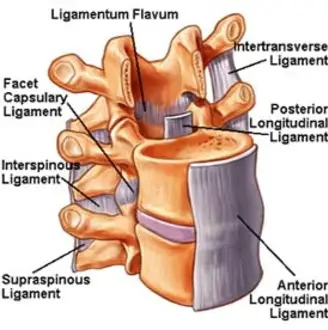
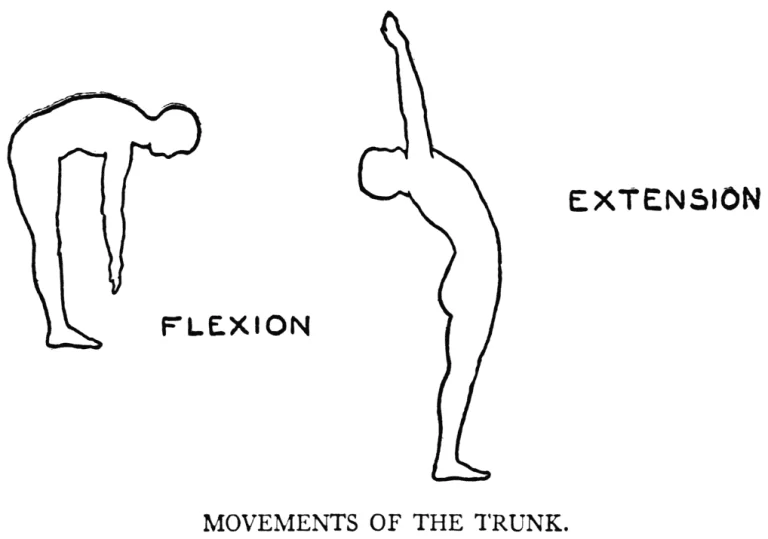
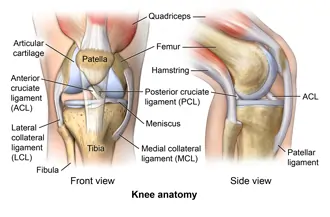
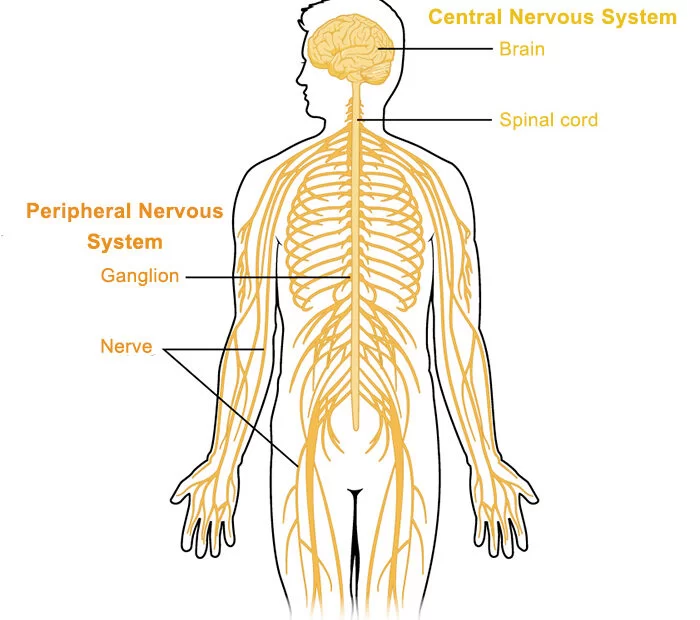
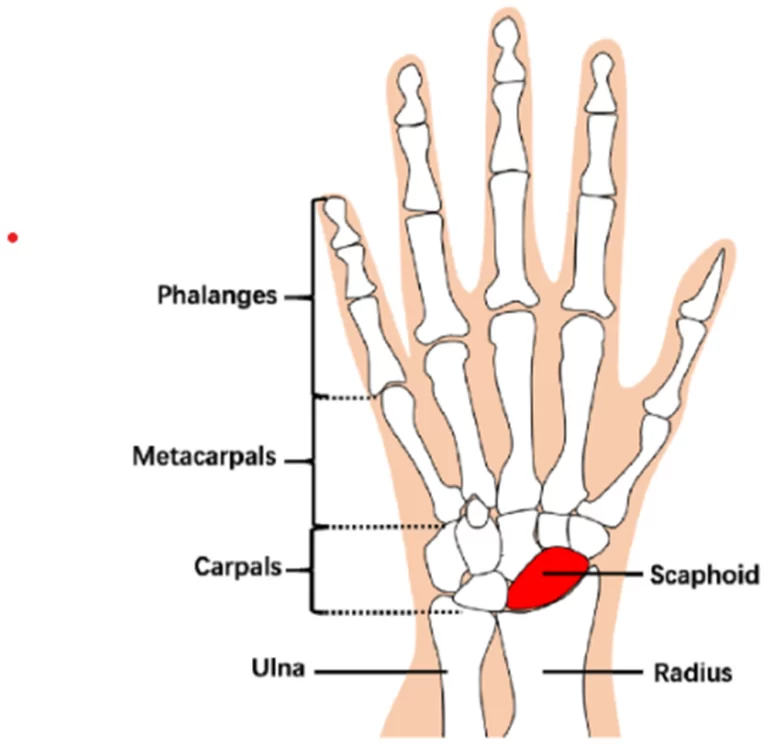
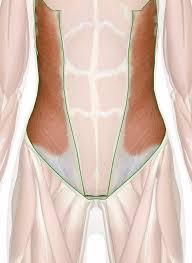

One Comment